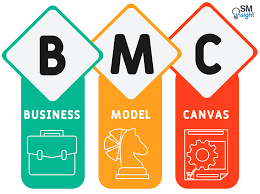Understanding the Business Model Canvas: A Strategic Tool for Business Success
Introduction
In the dynamic world of business, having a clear and structured approach to understanding and developing a business model is crucial for success. The Business Model Canvas (BMC) is a strategic management tool that provides a visual framework for designing, analyzing, and optimizing business models. Developed by Alexander Osterwalder and Yves Pigneur, the Business Model Canvas has become a widely used tool among entrepreneurs, startups, and established companies alike. This article explores the key components of the Business Model Canvas, its benefits, and how it can be effectively utilized to drive business success.
What is the Business Model Canvas?
The Business Model Canvas is a strategic tool that allows businesses to outline and visualize their business model on a single page. It provides a comprehensive overview of the key elements that make up a business and how they interact to create value. The BMC is divided into nine building blocks, each representing a crucial aspect of the business model.
Key Components of the Business Model Canvas
- Customer Segments
- Defines the different groups of people or organizations that a business aims to reach and serve. Understanding customer segments helps businesses tailor their products and services to meet specific needs.
- Value Propositions
- Describes the unique value or benefits that a business offers to its customers. This component addresses the problem the business solves or the need it fulfills.
- Channels
- Outlines the various ways a business delivers its value proposition to customers. Channels include distribution methods, sales channels, and communication channels.
- Customer Relationships
- Details the type of relationship a business establishes with its customers. This could range from personalized service to automated interactions.
- Revenue Streams
- Identifies how a business generates revenue from its customer segments. This includes various revenue models such as sales, subscription fees, licensing, and advertising.
- Key Resources
- Lists the critical assets and resources required to deliver the value proposition, reach customers, and maintain operations. Key resources can be physical, intellectual, human, or financial.
- Key Activities
- Describes the essential activities and processes a business must perform to create and deliver its value proposition. This includes production, problem-solving, and platform management.
- Key Partnerships
- Details the external organizations or entities a business collaborates with to achieve its objectives. Partnerships can include suppliers, alliances, and joint ventures.
- Cost Structure
- Outlines the major costs and expenses associated with operating the business. This includes fixed and variable costs, as well as economies of scale and scope.
Benefits of Using the Business Model Canvas
1. Clarity and Focus
The BMC provides a clear and concise view of the business model, allowing businesses to focus on essential components and identify areas for improvement.
2. Alignment and Communication
The visual nature of the BMC helps align team members and stakeholders by providing a shared understanding of the business model. It facilitates better communication and collaboration.
3. Flexibility and Adaptability
The BMC is a dynamic tool that can be easily updated and adapted as the business environment changes. It allows businesses to experiment with different scenarios and make adjustments based on market feedback.
4. Strategic Planning
By mapping out the business model, businesses can identify key drivers of success and areas of risk. This enables more effective strategic planning and decision-making.
5. Innovation and Creativity
The BMC encourages businesses to think creatively and explore new value propositions, revenue streams, and customer segments. It supports innovation and the development of new business ideas.
How to Use the Business Model Canvas
1. Create a Canvas
Start by creating a blank Business Model Canvas template. This can be done on a large board, using digital tools, or with a printed template.
2. Fill in Each Block
Collaborate with team members to fill in each of the nine building blocks. Use sticky notes or digital tools to allow for easy adjustments and brainstorming.
3. Analyze and Refine
Review the completed canvas to identify strengths, weaknesses, and opportunities. Analyze how the different components interact and make adjustments as needed.
4. Implement and Monitor
Use the Business Model Canvas as a guide for implementing and managing your business model. Continuously monitor performance and make updates based on changes in the market or business environment.
Conclusion
The Business Model Canvas is an invaluable tool for businesses seeking to understand, design, and optimize their business models. By providing a comprehensive and visual overview of key components, the BMC facilitates strategic planning, alignment, and innovation. Whether you are a startup entrepreneur or an established business looking to refine your model, the Business Model Canvas offers a structured approach to achieving business success.




